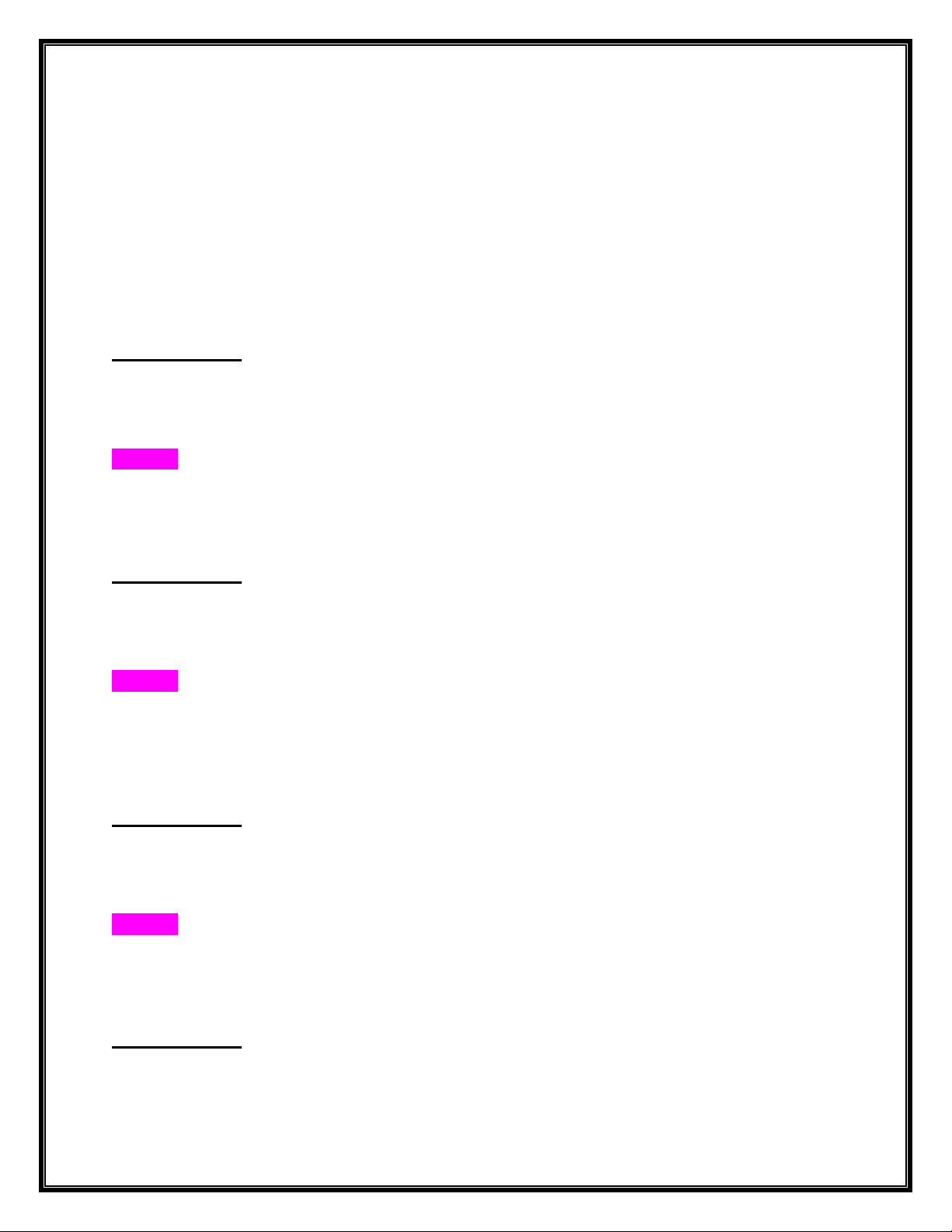
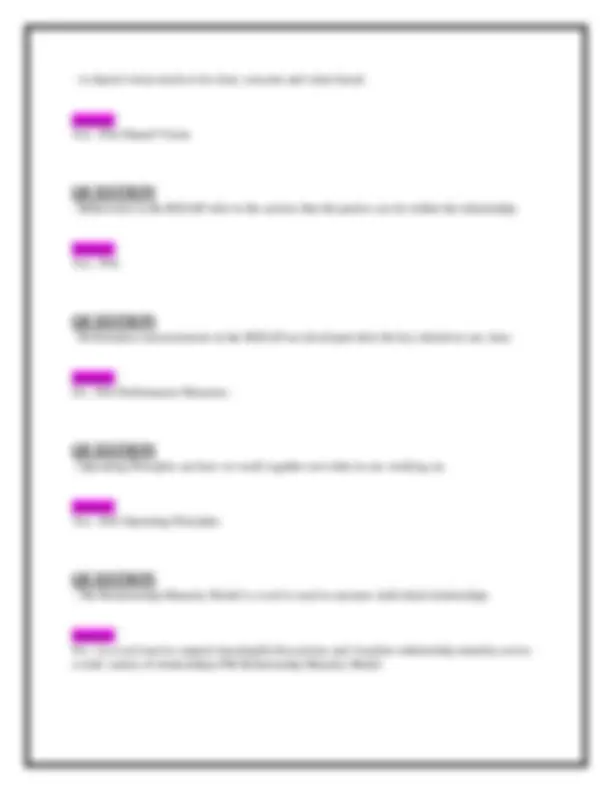
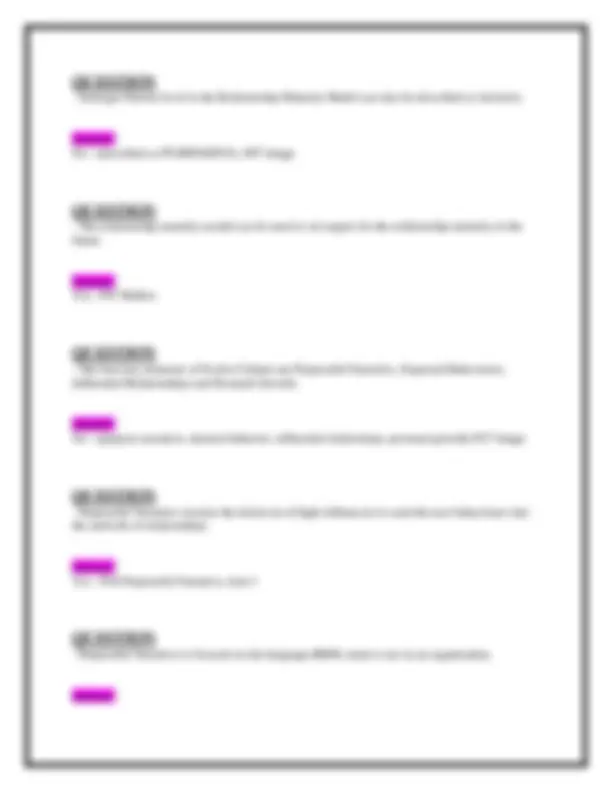
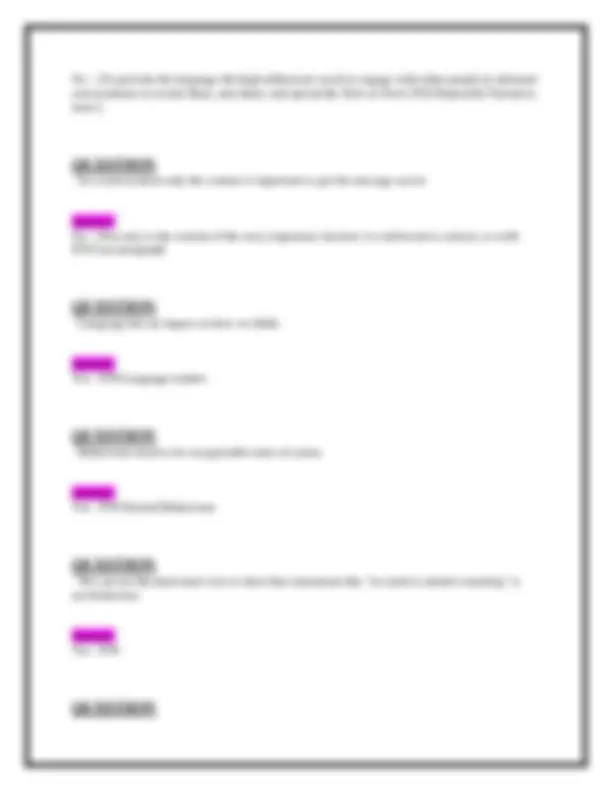
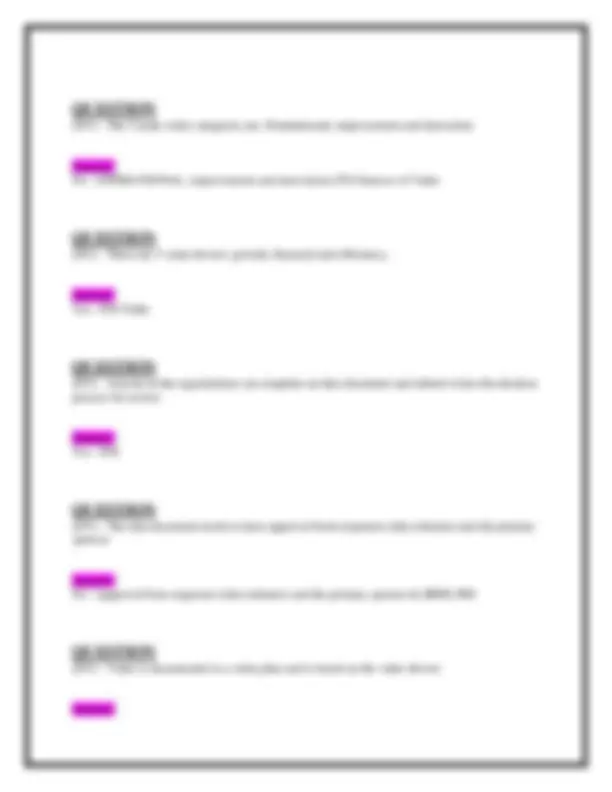
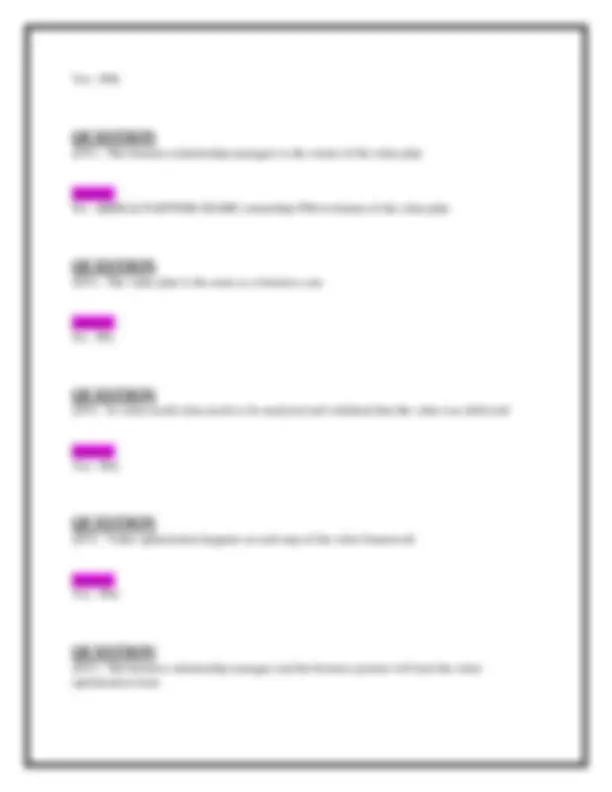
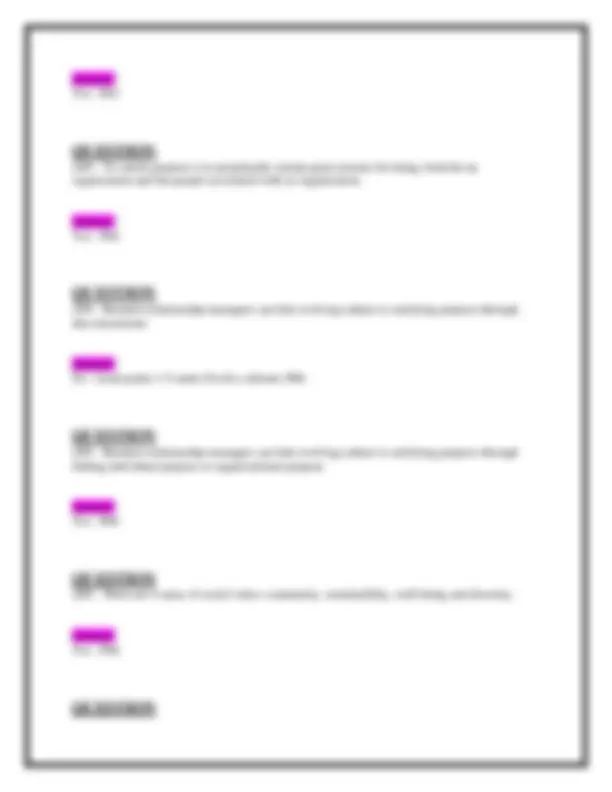
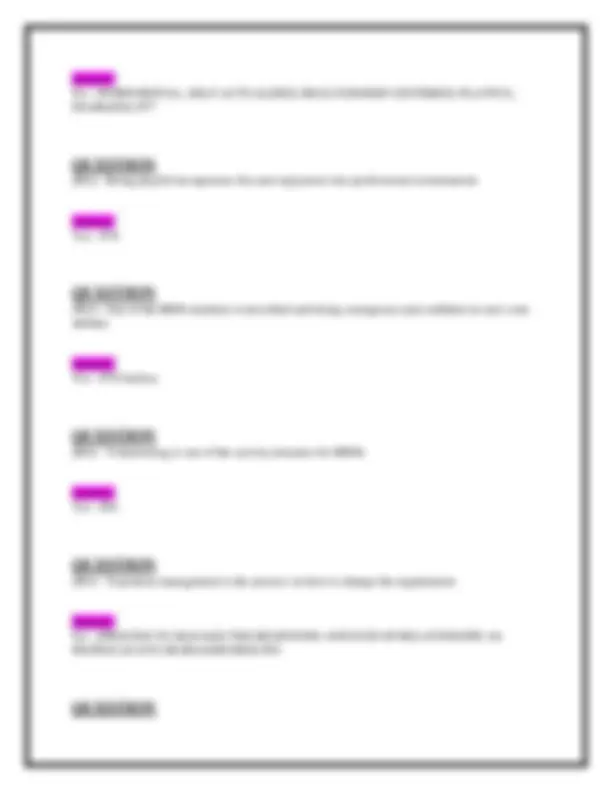
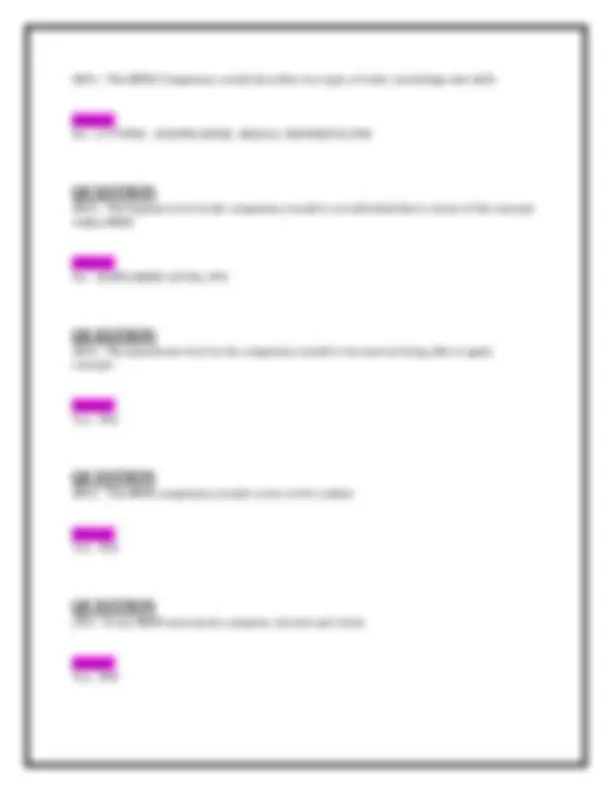
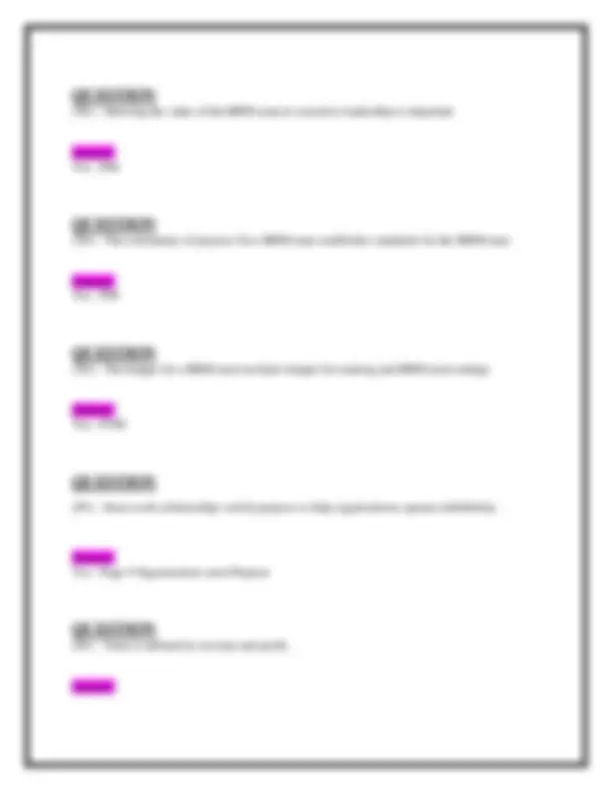
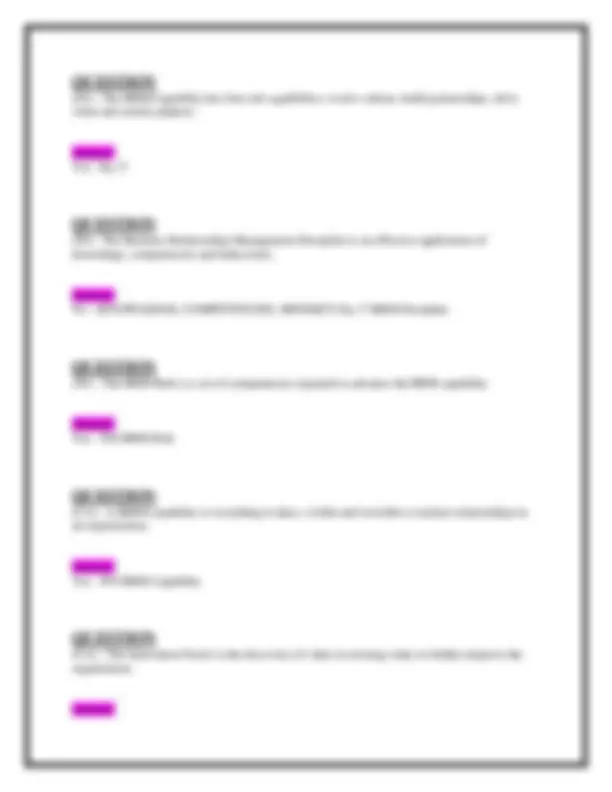
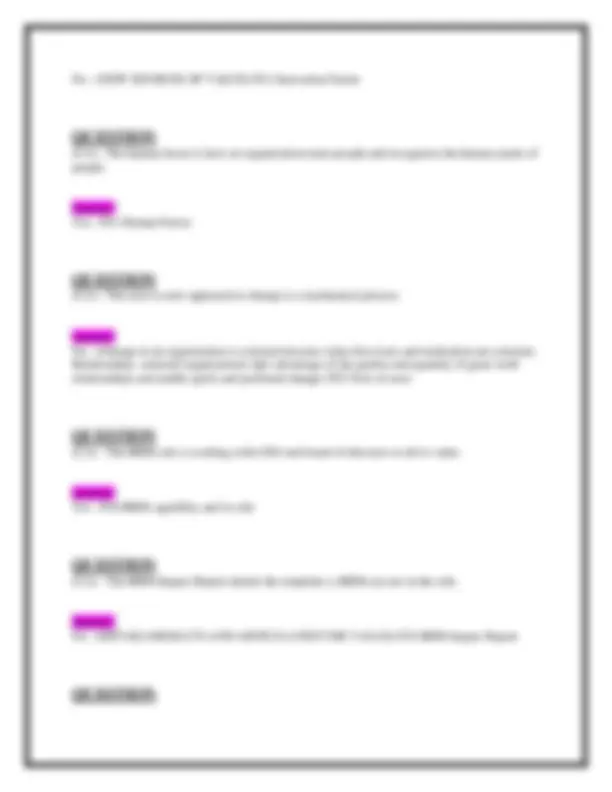
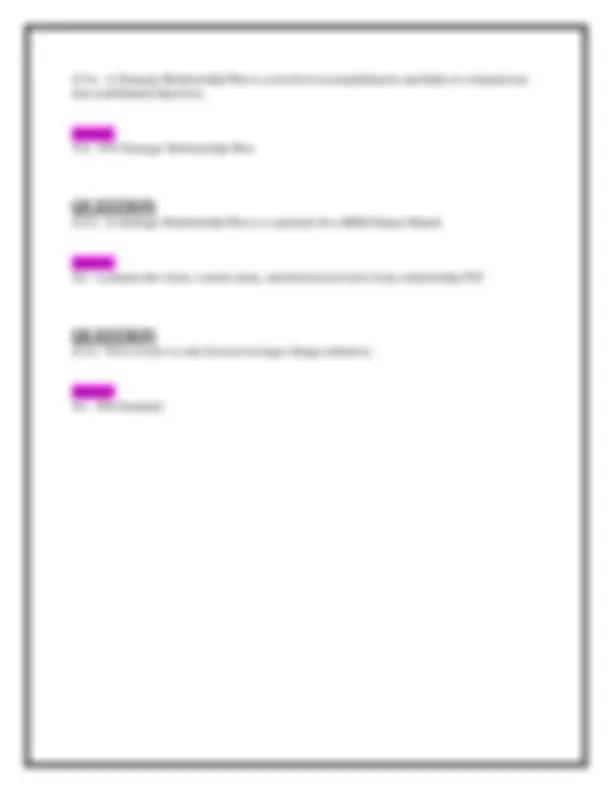


Study with the several resources on Docsity

Earn points by helping other students or get them with a premium plan


Prepare for your exams
Study with the several resources on Docsity

Earn points to download
Earn points by helping other students or get them with a premium plan
Community
Ask the community for help and clear up your study doubts
Discover the best universities in your country according to Docsity users
Free resources
Download our free guides on studying techniques, anxiety management strategies, and thesis advice from Docsity tutors
Business Relationship Manager Professional (BRMP) Statements | Questions and Verified Answers| (2025/ 2026 New Update)- 100% Correct QUESTION - The build partnership framework explains how to grow individual relationships into partnerships. Answer: Yes - P38 A framework to build partnerships QUESTION - The build partnership framework consists of relationship mindsets, relationship discovery, relationship nurturing and relationship maturity. Answer: No - (PARTNERING mindsets, relationship discovery, relationship nurturing and relationship maturity) P38 Image QUESTION - Partners bring a different mindset to relationships that are characterized by mutual trust, understanding, and equality Answer: Yes - P40 Partnering Mindsets
Typology: Exams
1 / 20

This page cannot be seen from the preview
Don't miss anything!













Answer: No - (CONNECTOR, Cultivator, Explorer and Investor) P40 Partnering Mindsets
No - (To provide the language the high influencers need to engage with other people in informal conversations to recruit them, arm them, and spread the Now-to-New) P28 Purposeful Narrative, item 2.
(DV) - The 4 elements of the Drive Value Framework are Value Discovery, Value Realization, Value Results and Value Optimization Answer: Yes - P51 Image
(DV) - Value is not the same as benefits Answer: Yes - P52 Definition of Value
(DV) - Employee satisfaction is an example of intangible value Answer: Yes - P53 Table
(DV) - The 3 main value categories are: Foundational, improvement and innovation Answer: No - (OPERATIONAL, improvement and innovation) P54 Sources of Value
(DV) - There are 3 value drivers: growth, financial and efficiency. Answer: Yes - P58 Table
(DV) - Anyone in the organization can complete an idea document and submit it into the ideation process for review Answer: Yes - P
(DV) - The idea document needs to have approval from requestor (idea initiator) and the primary sponsor Answer: No - (approval from requestor (idea initiator) and the primary sponsor & BRM) P
(DV) - Value is documented in a value plan and is based on the value drivers Answer:
Answer: Yes - P
(SP) - To satisfy purpose is to perpetually sustain great reasons for being, both for an organization and the people associated with an organization. Answer: Yes - P
(SP) - Business relationship managers can link evolving culture to satisfying purpose through idea documents Answer: No - (read points 1- 5 under Evolve cultrure) P
(SP) - Business relationship managers can link evolving culture to satisfying purpose through linking individual purpose to organizational purpose Answer: Yes - P
(SP) - There are 4 areas of social value: community, sustainability, well-being and diversity. Answer: Yes - P
(RO) - Business relationship manager should fulfill the role of liaison Answer: No - (BRM as Strategic - See chart at bottom of page 70) P
(RO) - Business relationship managers should be a single point of contact for their partners Answer: No - (BRM as Single point of focus - See chart at bottom of page 70) P
(RO) - The business relationship manager role should be clarified in the overall strategy and operating model Answer: Yes - P 71
(RO) - One of the challenges of being a single point of contact is that you can add very little value Answer: Yes - P
(RO) - The four values in the BRM code of ethics are: honesty, integrity, respect and accountability Answer: No - ( honesty, integrity, respect and OWNERSHIP) P
Answer: No - (PURPOSEFULL, SELF-ACTUALIZED, REALTIONSHIP CENTERED, PLAYFUL, FEARLESS) P
(RO) - Being playful incorporates fun and enjoyment into professional environments Answer: Yes - P
(RO) - One of the BRM mindsets is described and being courageous and confident in one's own abilities Answer: Yes - P78 fearless
(RO) - Volunteering is one of the activity domains for BRMs Answer: Yes - P
(RO) - Transition management is the process on how to change the organization Answer: No - (PROCESS TO MANAGE THE BEGINNING AND END OF RELATIONSIPS AS PEOPLE LEAVE OR REASSIGNED) P
(RO) - The BRM Competency model describes two types of traits: knowledge and skills Answer: No - (3 TYPES - KNOWLEDGE, SKILLS, MINDSETS) P
(RO) - The beginner level in the competency model is an individual that is aware of the concepts within BRM Answer: No - (EXPLORER LEVEL) P
(RO) - The practitioner level in the competency model is focused on being able to apply concepts. Answer: Yes - P
(RO) - The BRM competency model covers evolve culture Answer: Yes - P
(TE) - Every BRM team needs a purpose, mission and vision Answer: Yes - P
No - (Value is defined by so much more than just revenue, expenses, and profit. It can also come from a person having a sense of pride in a job well done, or from feeling their work has meaning.) Pg 9 Idea of Value is Evolving
(IN) - Strong relationships are necessary to help organization to be agile. Answer: Yes - Page 9 Global Digitalization Requires Agility
(IN) - Alignment is not sufficient for building great relationships. Answer: Yes - Page 10 Organizations are moving from alignment to Convergence
(IN) - The relationship centered organization includes the environment, knowledge and mindsets. Answer: Yes - Page 12 Top of page
(IN) - The theory of relationshipism explains the power of relationships in organization. Answer: Yes - Page 12 Theory of Relationshipism
(IN) - The BRM Capability centers on the belief that positive relationships drive value in organizations.
Answer: No - (BRM PHILOSOPHY) Pg 13 BRM Philosophy
(IN) - The Triple Bottom Line is focused on Purpose, Passion and planet Answer: No - (PURPOSE, PEOPLE, PLANET) Pg 14 Triple Bottom Line
(IN) - The Triple Bottom Line adds a new dimension to the calculation of value. Answer: Yes - P15 Purpose
(IN) - Relationships are everywhere in your organization. Answer: Yes - P16 Summary
(IN) - The definition of the BRM capability is to shape and influence the concepts of the BRM role Answer: No - (IS EVERYTHING IT TAKES, VISABLE AND INVISABLE, TO NURTURE RELATIONSHIPS IN AN ORGANIZATION) Pg 16 BRM Capability definition
No - (NEW SOURCES OF VALUE) P21 Innovation Factor
(CA) - The human factor is how an organization treats people and recognizes the human needs of people. Answer: Yes - P21 Human Factor
(CA) - The now-to-new approach to change is a mechanical process. Answer: No - (Change in an organization is constant because value discovery and realization are constant. Relationship- centered organizations take advantage of the quality and quantity of great work relationships and enable quick and profound change) P23 Now-to-new
(CA) - The BRM role is working with CEO and board of directors to drive value. Answer: Yes - P24 BRM capability and its role
(CA) - The BRM Impact Report details the templates a BRM can use in the role. Answer: No - (DETAILS RESULTS AND ARTICULATED THE VALUE) P25 BRM Impact Report
(CA) - A Strategic Relationship Plan is a record of accomplishments and helps to communicate non-confidential objectives. Answer: Yes - P25 Strategic Relationship Plan.
(CA) - A Strategic Relationship Plan is a synonym for a BRM Impact Report. Answer: No - (contains the vision, current status, and historical record of any relationship) P
(CA) - Now-to-new is only focused on large change initiatives. Answer: No - P26 Summary